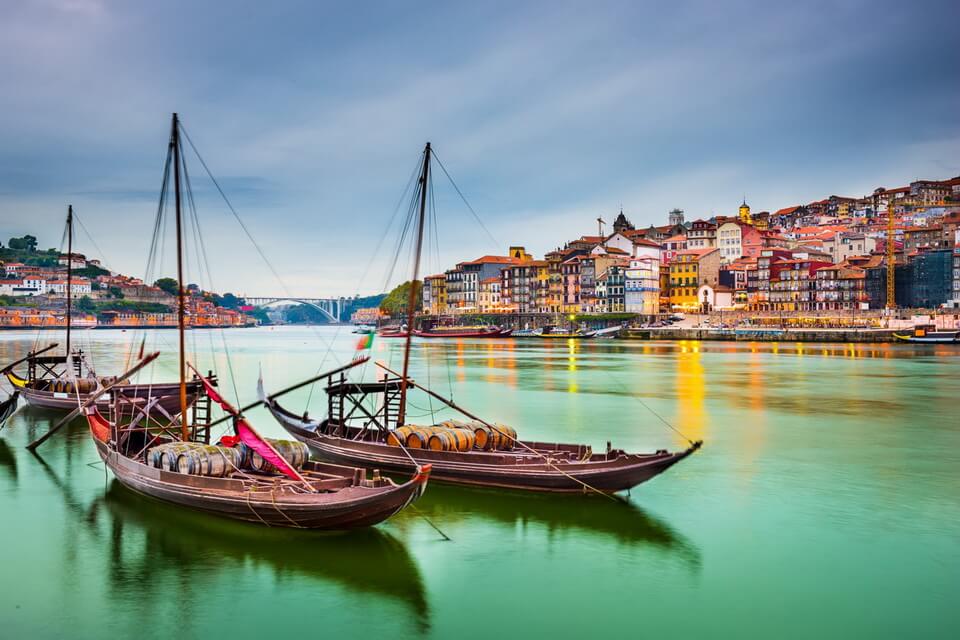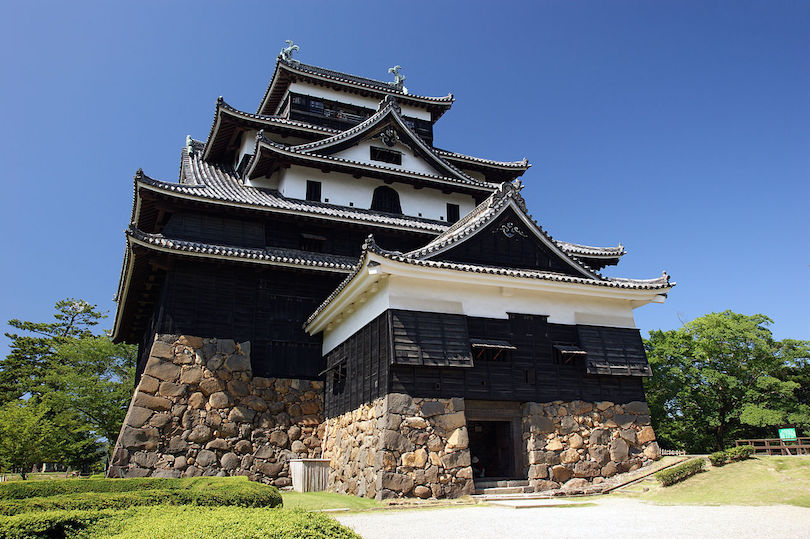They began to appear in the Land of the Rising Sun during the 15th century when the country was dissolving into warring states. Later, they were built as places of governance and as homes for feudal lords, or daimyo. At one time, there were as many as five thousand castles in Japan; today, there are around 100, with only a dozen that have survived from the feudal era. These structures of wood and stone offer visitors a rare glimpse of Japan’s feudal past.
Himeji Castle
Considered the most impressive of extant feudal-era castles in Japan, Himeji Castle is located west of Kōbe, the capital of the Hyōgo Prefecture. The fortress is commonly called the White Heron Castle because the castle’s white-plastered towers resemble a snowy egret in flight. Built in 1601 on the site of an earlier castle, the hilltop castle consists of 83 structures centered on the Tenshu-gun, a complex of keeps and connecting buildings. The primary keep is a six-story structure that’s visible from nearly any location in Himeji City. The castle has been featured in several films, including the James Bond adventure film “You Only Live Twice” and “The Last Samurai,” starring Tom Cruise.
Matsumoto Castle
Located in a mountainous region to the northwest of Tokyo, Matsumoto Castle is set on a structure of stone surrounded by a large moat. Constructed in 1590, the multi-storied castle is trimmed in black, earning the fortress its nickname: Crow Castle. The castle’s main keep, or donjon, is the oldest in Japan and offers sweeping views of the Hijiri Kōgen mountains. Although Matsumoto is a hirajiro, a flatland castle, it was built for fortification. There are openings to fire arrows or drop stones on invaders throughout the keep.
Matsue Castle
The only castle remaining in the San’in Region on the southwest coast of Japan’s main island, Matsue Castle is unique it that it never saw military action, although it was constructed in a defensive, watchtower style. Built in 1611, the hilltop fortress was completed after the last great feudal war. Most of the castle complex was dismantled in 1875, and only the main keep and the ishigaki, or stone walls, are extant. During the 1950s, reconstruction of the fortress began. The castle’s nickname, “The Black Tower,” reflects the keep’s striking ebony color. Visitors can tour the keep and the grounds, and there are boat tours offered around the outer moat as well.
Hikone Castle
Hikone Castle offers visitors a real insight into how Japan’s castle complexes looked during their heyday. The original gardens, gates and guard houses have been as carefully preserved as the main keep. The Hikone complex contains structures and materials gathered from other castles in the country. After 20 years of construction, the hilltop castle was completed in 1622. The castle remained under control of the Ii daimyo feudal lords until 1868. The nearby Hikone Castle Museum displays Ii dynasty treasures, including armor and musical instruments.
Hirosaki Castle
A hilltop castle in northern Japan, Hirosaki Castle is known for its five original turreted gates, fortified moats and sprawling grounds. Completed in 1611, the original five-story donjon was destroyed by fire in 1627. A three-story watchtower was then re-structured to serve as the primary keep. The surrounding grounds, gates and moats draw even more attention than the keep, and offering visitors a relaxing, garden setting. Planted with more than 2,500 cherry trees, the grounds play host to one of Japan’s largest cherry blossom festivals each spring.
Source Touropia


















 (1).jpg)












